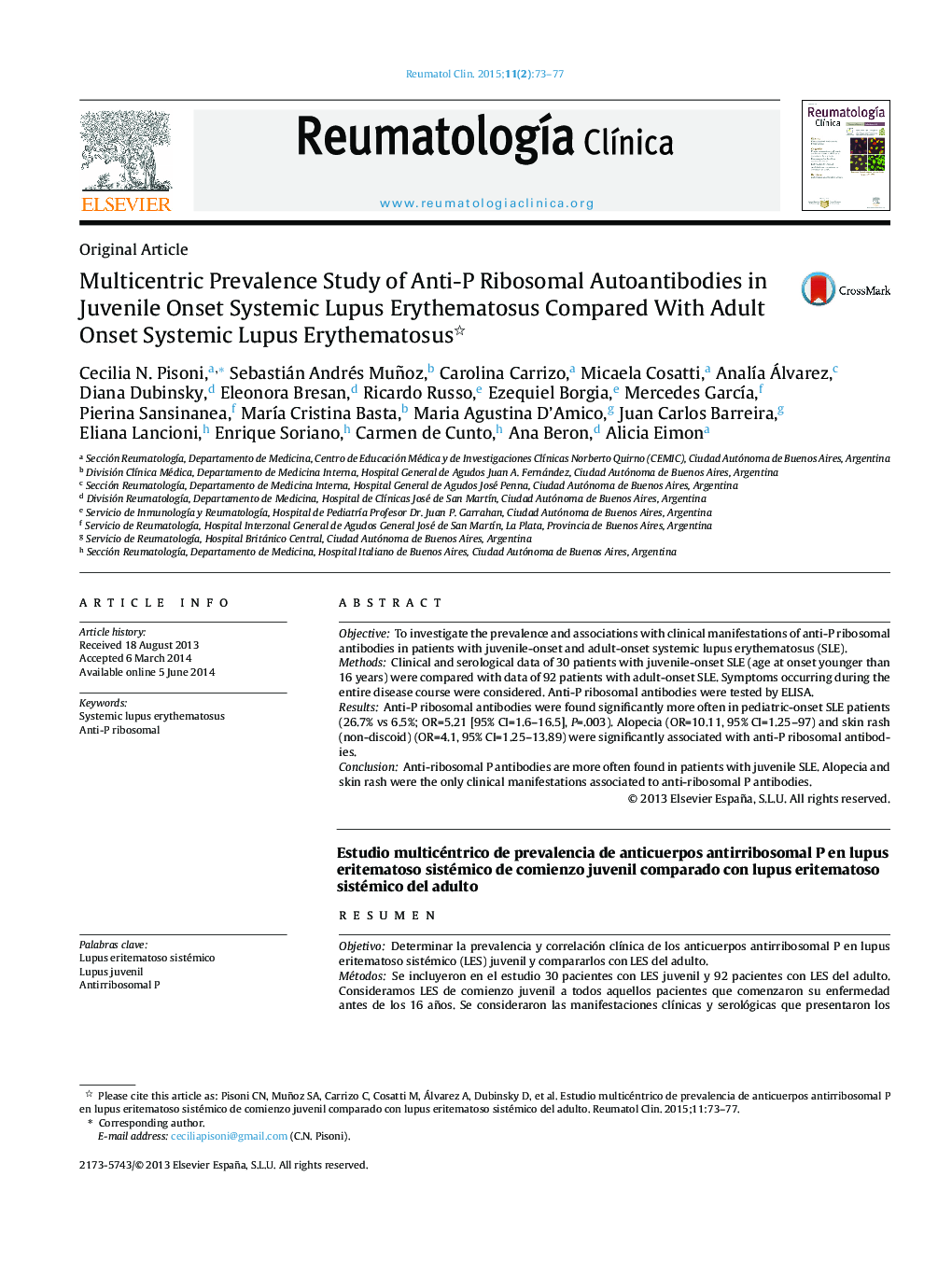| Article ID | Journal | Published Year | Pages | File Type |
|---|---|---|---|---|
| 3384149 | Reumatología Clínica (English Edition) | 2015 | 5 Pages |
ObjectiveTo investigate the prevalence and associations with clinical manifestations of anti-P ribosomal antibodies in patients with juvenile-onset and adult-onset systemic lupus erythematosus (SLE).MethodsClinical and serological data of 30 patients with juvenile-onset SLE (age at onset younger than 16 years) were compared with data of 92 patients with adult-onset SLE. Symptoms occurring during the entire disease course were considered. Anti-P ribosomal antibodies were tested by ELISA.ResultsAnti-P ribosomal antibodies were found significantly more often in pediatric-onset SLE patients (26.7% vs 6.5%; OR=5.21 [95% CI=1.6–16.5], P=.003). Alopecia (OR=10.11, 95% CI=1.25–97) and skin rash (non-discoid) (OR=4.1, 95% CI=1.25–13.89) were significantly associated with anti-P ribosomal antibodies.ConclusionAnti-ribosomal P antibodies are more often found in patients with juvenile SLE. Alopecia and skin rash were the only clinical manifestations associated to anti-ribosomal P antibodies.
ResumenObjetivoDeterminar la prevalencia y correlación clínica de los anticuerpos antirribosomal P en lupus eritematoso sistémico (LES) juvenil y compararlos con LES del adulto.MétodosSe incluyeron en el estudio 30 pacientes con LES juvenil y 92 pacientes con LES del adulto. Consideramos LES de comienzo juvenil a todos aquellos pacientes que comenzaron su enfermedad antes de los 16 años. Se consideraron las manifestaciones clínicas y serológicas que presentaron los pacientes desde el diagnóstico hasta el momento de inclusión en el estudio (manifestaciones acumuladas). El anticuerpo antirribosomal P fue evaluado mediante la técnica de enzimo-inmunoensayo (ELISA).ResultadosLa presencia de antirribosomal P fue significativamente mayor en el grupo de pacientes con LES juvenil comparado con LES del adulto (26,7% vs. 6,5%; OR = 5.21 [95% CI = 1,6–16,5], p = 0,003). La alopecía (OR = 10,11; 95% CI = 1,25–97) y rash cutáneo (no discoide) (OR = 4,1; 95% CI = 1,25–13,89) fueron las únicas manifestaciones clínicas que se asociaron en forma estadísticamente significativa con la presencia del anticuerpo antirribosomal P.ConclusiónEste estudio confirma una mayor prevalencia de anticuerpos antirribosomal P en pacientes con LES juvenil. La alopecia y el rash cutáneo fueros las únicas manifestaciones clínicas asociadas a la presencia de antirribosomal P.
